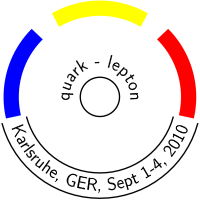Description
In order to cope with the large rate of proton collisions at the LHC, the
ATLAS experiment is equipped with a complex three level trigger
system, where the first level (L1) is entirely implemented in custom built
hardware and the two successive levels (referred together as High
Level Triggers - HLT) are software selection algorithms running on large
PC farms.
Since March 30, 2010, the LHC has been successfully providing 7 TeV
proton-proton collisions, resulting in a total integrated luminosity of a
few hundred inverse nanobarns. These data have been very useful to
assess the performance of the ATLAS detector and trigger. In particular,
the ATLAS muon, electron, tau and Bphysics triggers have been
validated and trigger strategies have been developed to manage
increasing luminosity. These triggers are very important for example for
new physics discoveries at the LHC, as they allow efficient collection of
the signal events while keeping the background rate within the allowed
bandwidth. During 2010 they have been commissioned in various
stages. Firstly, the rejection was applied only at L1 and the HLT was run
online in pass-through mode. This allowed a detailed study and
optimization of the HLT algorithms without interfering with the data
taking. With increasing luminosity the HLT has been activated to
efficiently select leptons from J/Psi, bottom, charm, W and Z decays.
This contribution focuses on the assessment of the relevant quantities
in the muon, electron, tau and Bphysics trigger selection, emphasizing
the components which are fundamental in the decision making. The
different strategies for trigger efficiency measurements will be
presented. In addition, the evolution of the trigger menu, which will be
vital in future physics measurements, will be described.
